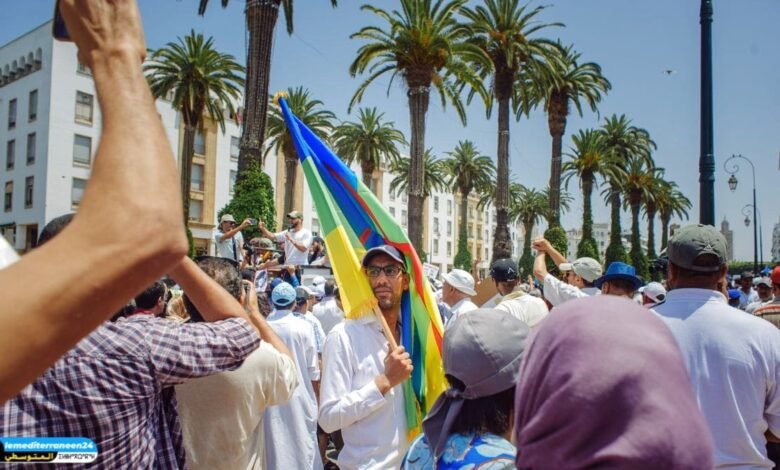The Amazigh movement in Morocco celebrates its spring and displays its demands

On Sunday, 20 April, two marches were held to mark the 45th anniversary of Tafsut Imazighen (the Amazigh Spring): one in Marrakech and the other in Rabat.
After a brief delay imposed by the authorities, about 3,500 participants walked 4.5 km from the Bab Doukkala ramparts to the Koutoubia Mosque under heavy police presence. More than sixty NGOs chose the Red City to show solidarity with the victims of the Al Haouz earthquake (8 September 2023), urging the state to speed up reconstruction efforts.
Protesters also demanded the release of Saïd Aït Mehdi co‑ordinator of the Earthquake Victims’ Coalition together with three other activists, as well as the detainees from the Hirak of the Rif. Banners denounced unequal access to public services and land dispossession in the Anti‑Atlas; several groups from the Souss‑Massa region marched under the “Akal Coordination” banner.
Roughly 200 demonstrators intended to march from Bab El Had to Parliament under the slogan “For an Amazigh identity of the state,” but a heavy security deployment blocked the procession, resulting in minor scuffles; two participants from Nador were slightly injured. Protesters called for the effective implementation of Amazigh’s official status in education and the media, criticising Aziz Akhannouch’s government for unmet electoral promises particularly the exclusion of Tamazight from a translation programme for works by Moroccans abroad.
In both cities, alongside the Amazigh tricolour, flags of Kabylia and Azawad were raised, underscoring a shared cultural space. Common demands included freeing Hirak‑Rif prisoners and ensuring equitable regional development.
Tafsut traces its origins to the April 1980 events in Kabylia (Algeria), when a conference on Amazigh pre‑Islamic poetry was banned, sparking major protests. Since then, the date has become a symbol for Amazigh activists across North Africa and the diaspora. In Morocco, that spring left a lasting mark: the kidnapping of linguist Boujemâa Habbaz in 1981, historian Ali Sadki Azaykou’s one‑year imprisonment in 1982 over an article in Amazigh magazine, and hotel closures and cultural bans in Agadir for displaying Tifinagh script.
Thus, the Amazigh Spring of 2025 shows how historical memory and present‑day social concerns remain intertwined, highlighting the movement’s determination to assert its linguistic, cultural, and developmental rights in Morocco and beyond.
By: Jassim Ahdani





